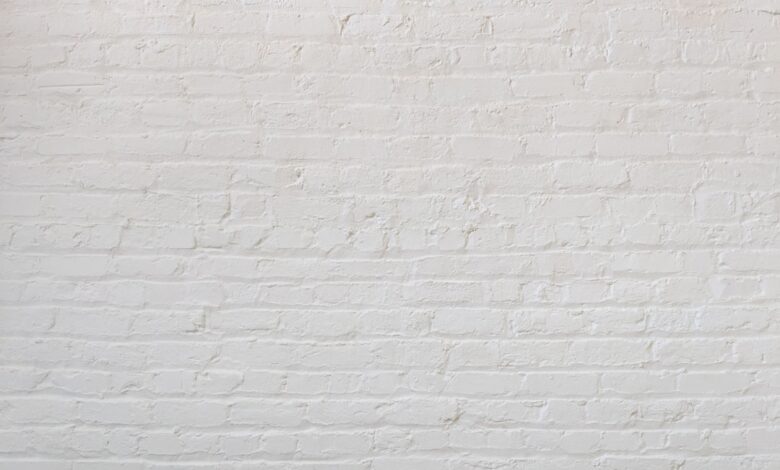Best Wall Pilates App Free

Want to get a great workout without needing a fancy Pilates studio? Wall Pilates is your answer! It’s a fantastic way to build strength, improve flexibility, and work on your posture, all from the comfort of your own home. And the best part? You don’t need tons of equipment – just a wall and a good app to guide you. But with so many apps out there, finding the best *free* wall Pilates app can feel overwhelming. Don’t worry, I’m here to help you sort through the options and find the perfect fit for your needs.
As a fitness enthusiast who loves the convenience and effectiveness of Wall Pilates, I’ve explored many apps to find the ones that offer quality instruction without breaking the bank. Let’s dive into some of the top contenders and what makes them stand out. We’ll also look at what to consider when choosing an app, plus some important safety tips to keep in mind.
Why Choose Wall Pilates?
Before we jump into the apps, let’s quickly talk about why Wall Pilates is so great. Unlike traditional Pilates, Wall Pilates uses the wall as a prop for support and resistance. This can make exercises more accessible, especially for beginners. The wall helps you maintain proper alignment, deepen stretches, and engage your muscles more effectively. It’s also a low-impact workout, making it gentle on your joints.
Here are some benefits you can expect from regular Wall Pilates practice:
- Improved posture: The wall provides feedback to help you stand taller and align your spine.
- Increased strength: You’ll build strength in your core, legs, and arms as you push against the wall.
- Enhanced flexibility: Wall Pilates helps you stretch deeper and improve your range of motion.
- Reduced pain: By strengthening your core and improving alignment, Wall Pilates can help alleviate back pain and other aches.
- Stress relief: Like all forms of exercise, Wall Pilates can help reduce stress and improve your mood.
What to Look for in a Free Wall Pilates App
When searching for a free Wall Pilates app, consider these factors:
- Variety of workouts: Does the app offer a range of workouts for different levels and goals?
- Clear instructions: Are the instructions easy to understand and follow?
- Video quality: Is the video clear and easy to see?
- Qualified instructors: Are the instructors certified Pilates teachers?
- User-friendly interface: Is the app easy to navigate and use?
- Free content: How much free content does the app offer? Some apps may offer a limited number of free workouts or a free trial period.
Keep in mind that “free” often comes with some trade-offs. A free app might have ads or offer only a limited selection of workouts. It’s important to weigh the pros and cons to find an app that meets your needs and budget.
Top Free Wall Pilates App Options
It’s tough to guarantee *completely* free access with zero limitations forever, as app business models often evolve. However, here are some apps that offer substantial free content or free trial periods that make them worth exploring for Wall Pilates:
- YouTube: While not a dedicated app, YouTube is a treasure trove of free Wall Pilates workouts. Many qualified Pilates instructors have channels where they share full-length classes. Search terms like “Wall Pilates for beginners” or “Wall Pilates full body workout” to find suitable videos.
- Down Dog: Known for its yoga app, Down Dog also offers Pilates workouts. They frequently have promotional periods offering free access to their apps. Check their website for current deals. Even without a promotion, they often have a few free introductory videos.
- FitOn: This app offers a wide variety of fitness classes, including Pilates, with many available for free. While they don’t specialize in Wall Pilates, you can often find modifications to traditional Pilates exercises that utilize the wall. Look for classes that emphasize core work and proper alignment.
- Blogilates Official App: Cassey Ho’s Blogilates app offers a blend of Pilates and POP Pilates (Pilates with a dance twist). While the app offers a subscription service with access to more structured programs, there’s still a decent amount of free content available, including individual Pilates exercises. You may need to get creative and adapt some exercises to the wall.
Remember to read reviews and try out a few different apps to see which one you like best. Pay attention to the instructor’s cues, the video quality, and the overall user experience.
Staying Safe During Wall Pilates
Safety is always the top priority. Here are some tips to keep in mind when practicing Wall Pilates:
- Consult your doctor: If you have any underlying health conditions, talk to your doctor before starting a new exercise program.
- Start slowly: If you’re new to Pilates, begin with beginner-level workouts and gradually increase the intensity as you get stronger.
- Listen to your body: Pay attention to how your body feels and stop if you experience any pain.
- Use proper form: Proper form is essential to prevent injuries. Watch the videos carefully and focus on maintaining correct alignment. The wall is there to *assist* your form, not compensate for poor form.
- Use a non-slip surface: Make sure you’re working on a non-slip surface to prevent falls. A yoga mat can provide extra cushioning and grip.
- Ensure a clear space: Remove any obstacles from around you to avoid tripping or bumping into things.
Beyond Free: When to Consider Paid Apps
While there are some great free Wall Pilates options, you might eventually want to consider a paid app or subscription service. Paid apps often offer more advanced workouts, personalized programs, and one-on-one coaching. They can also be ad-free and have a more polished user experience.
If you find that you’re consistently using a free app and enjoying Wall Pilates, consider upgrading to a paid version to unlock more features and support the creators. Or, if you’re looking for a more structured and personalized approach, a paid app might be a good investment.
Alternatives to Wall Pilates Apps
If you’re not finding the perfect Wall Pilates app, don’t worry! There are other options. You can:
- Take a Wall Pilates class at a local studio.
- Work with a certified Pilates instructor for personalized guidance.
- Use general Pilates apps and adapt exercises to the wall.
The most important thing is to find a workout routine that you enjoy and that fits your lifestyle.
Frequently Asked Questions
Is Wall Pilates safe for beginners?
Yes, Wall Pilates is generally safe for beginners, but it’s important to start slowly and listen to your body. Choose beginner-level workouts and focus on maintaining proper form. If you have any concerns, consult your doctor or a certified Pilates instructor.
How often should I do Wall Pilates?
You can do Wall Pilates several times a week. Aim for at least 2-3 sessions per week to see results. As you get stronger, you can gradually increase the frequency and intensity of your workouts.
What equipment do I need for Wall Pilates?
The beauty of Wall Pilates is that you don’t need much equipment. All you need is a wall, a yoga mat (optional), and comfortable clothing. You might also want to have a towel and water bottle handy.
Can Wall Pilates help with back pain?
Yes, Wall Pilates can help with back pain by strengthening your core muscles and improving your posture. However, if you have chronic back pain, it’s important to talk to your doctor before starting a new exercise program.
How long does it take to see results from Wall Pilates?
The time it takes to see results from Wall Pilates varies depending on your fitness level and how consistently you practice. However, you can typically expect to see improvements in your strength, flexibility, and posture within a few weeks of regular practice.
Choosing the best “free” Wall Pilates app involves balancing your budget with your fitness needs and preferences. Experiment with the options mentioned above, prioritize safety, and remember that consistency is key to achieving your fitness goals. Happy wall Pilates-ing!
Related Posts
| Best Free Wall Pilates App |



